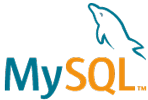Home > On-Demand Archives > Q&A Sessions >
Live Q&A - How to Win at 62304
Alan Cohen - Watch Now - EOC 2024 - Duration: 25:05

Thanks for your kind words, and sorry for the delayed response. I never had the pleasure of using Ada, but in general safe languages are a good idea and I think they are underutilized!
Thanks Alan. I thought this was a really good intro to 62304 and I was impressed with what you covered in the time. I found your example of the input screens ("reducing footprint") interesting and thought it was a shame you didn't have time to dig into it a bit further. While the addition of a dose summary screen seems a good risk control measure, there are two aspects of this example that prove challenging in practice if attempting to claim a reduction in safety class:
- The need to provide segregation between software items to justify the reduction in safety class
- The reliance on the user to inspect the summary screen, which may necessitate human factors activities to justify any reduction in risk.
I'm always interested to hear how other engineers handle such cases. Thanks!
Hi Carl,
Thanks for your observations, they're quite reasonable. I think I mentioned in the presentation that the things presented are simplified to make a point, there's always lots more bits to consider. In practice, as it sounds like you know, any of these decisions end up requiring a good bit of thought!
On the second point, it's also possible that adding the summary screen could potentially reduce human factors risk.
Thank you, Alan, for a very informative presentation. I particularly like your design for regulatory (D4R) approach, which I would translate as "design for risk". This is a paradigm shift, where risk reduction becomes the top priority, which is not how developers usually think.
Of course, your tip to acquire the standards from Evs.ee is a very nice touch. I checked it out, and it works. They have much more than IEC-62304!
Thank you for your kind words, I'm glad it was helpful.
evs.ee is an amazing find. When I first found it, I couldn't believe it was real!
16:02:49 From miro to Everyone: What is your experience with external software components, such as RTOS or middleware. What does it mean that some such components are "certified". What kind of documentation typically comes with "certified" components? How teams and FDA inspectors use such external, 3rd-party documentation? 16:09:26 From BobF to Everyone: In the medical field, for product development, how often does one come across the hurdle 'unknown - unknowns' that admittedly, encompasses the entire 'new product' therapy chain? 16:09:47 From Andrew Garnett to Everyone: Thanks for the presentation! Related to your example where you showed 3 complex screens used for obtaining user input that were initially classified Class C, then lowered to B or A based on the addition of another confirmation screen. In this example, how is software segregation handled for the different Safety Classes represented? 16:15:49 From BobF to Everyone: The recent Proton Therapy ... as an example. 16:16:38 From BobF to Everyone: Unknown unknowns 16:17:25 From miro to Everyone: As a vendor of a software component, what would be the greatest help and time saver for the users in terms of the certification? 16:19:40 From BobF to Everyone: Thanks ... minimising risk as well as uncertainty! 16:23:35 From Eric to Everyone: Is the apparently safe ADA an issue in medical development? 16:24:13 From Eric to Everyone: Programming language ADA# 16:24:36 From Eric to Everyone: Used in Aircrafts, nuclear plants ... 16:25:42 From Tim Guite (TTP) to Everyone: Thanks Alan! 16:25:49 From Tim Guite (TTP) to Everyone: Thanks Jacob :) 16:25:53 From Eric to Everyone: Thank you all! 16:26:01 From Lyden Smith to Everyone: Thank you! 16:26:13 From Keith J to Everyone: Thanks everyone for a good day of presentations and Q&As 16:26:28 From Ingo Beyer to Everyone: Thanks a lot Alan! 16:26:37 From Raul Pando to Everyone: Great advice, thanks all!












Great talk thanks. I appreciated the high-level intro to 62304, as I have no experience with medical software development. It seems very similar to other regulated industries I am familiar with. Echoing Miro’s comment, D4R sounds like an excellent priority to have in mind, rather than a paperwork activity we do to get the project over the line after the fun bit is done. My first project was with Ada 83… all I remember was it took an age to build (on VAX VMS), but did so many checks at compile time, there were fewer bugs.